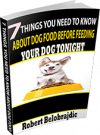The Role of Mixed Protein & Single Protein diets In Canine Nutrition

Guest Author: Dr A Sutton, Pet Nutritionist
Introduction
Dietary protein is a critical component in canine nutrition, playing a significant role in various physiological processes that are fundamental to a dog's overall health and well-being.
Historically, single protein diets have been widely employed for their simplicity and perceived efficacy in addressing specific dietary needs or allergenic concerns. In contrast, mixed protein diets incorporate a diverse array of protein sources, aiming to provide a broader spectrum of essential amino acids, vitamins, and minerals.
Here we outline the implications of both approaches to canine nutrition.
Role of Proteins in Canine Physiology
In dogs, proteins are pivotal to health and physiology. Central to dietary outcomes, they form the backbone for essential biological components: enzymes, hormones, tissues, and antibodies. These macromolecules drive muscle growth, fortify the immune system, and holistically promote canine health. The choice between single and mixed-protein diets depends on understanding protein's extensive impact on a dog's health and nutrition.
Proteins are chains of amino acids, life's foundational building blocks. Dogs require specific amino acid combinations to produce vital proteins, including enzymes, hormones, and structural elements for muscles and skin. Notably, dogs cannot synthesize all amino acids they need internally so essential amino acids must be sourced from their diet. Inadequate protein intake or a diet with a restricted amnio acid profile, can lead to amino acid deficits, impairing a dog's ability to repair and maintain tissues.
Proteins play crucial roles in metabolic activities. Enzymes, which are made up of proteins, facilitate various biochemical reactions, aiding digestion, and nutrient uptake. Simultaneously, protein-based hormones regulate growth and metabolism.
Immunoglobulins, which are integral to the immunological defence apparatus, are specialised protein types. Their primary role is in the identification and neutralisation of harmful pathogens, including bacteria and viruses. Insufficient protein can weaken this defence, making dogs more prone to infections.
Proteins, specifically structural ones like collagen and keratin, are instrumental in sustaining skin and coat health and maintaining proper skin barrier function and protection from the external environment.
Whilst carbohydrates and lipids function as principal energy reservoirs, proteins can also be repurposed for energy via amino acid degradation if needed, for example in a high protein /low carbohydrate diet. However, the primary role of protein is not for energy derivation.
Nitrogen balance refers to the difference between the amount of nitrogen taken into the body, primarily through protein consumption, and the amount excreted, mostly in the form of urea in urine. In dogs, as with other mammals, maintaining a proper nitrogen balance through dietary intake of protein is crucial for overall health. This is why protein is key to facilitating the exponential growth of puppies during their first year where protein utilisation is exceptionally high but also for maintaining health through all life stages. Provision of high-quality complete protein sources and modulating protein intake across life stages through is therefore an important nutritional strategy for optimum health.
The Benefits of a Mixed Protein Diet
A mixed protein diet for dogs, characterised by the inclusion of diverse protein sources such as meat, fish, poultry, and plant-based proteins, offers multiple scientifically supported benefits:
Amino Acid Diversity: Diverse protein sources provide a broader spectrum of essential amino acids.
Amino acids are the building blocks of proteins and play a pivotal role in various physiological processes. Different protein sources have distinct amino acid profiles, ensuring that dogs receive a comprehensive array of these essential nutrients. This diversity reduces the risk of amino acid deficiencies and supports optimal protein synthesis, tissue repair, and overall metabolic functions. This is illustrated in table 1 which compares the amino acid requirements of an adult dog compared to the amino acid profile as a % crude protein) for common feed ingredients.

All data expressed as a % crude protein, dry matter basis
Balanced Nutrient Profile: Combining various protein sources allows for a more balanced nutrient profile in the dog's diet. Different proteins are rich in specific vitamins, minerals & fatty acids. A mixed protein diet ensures a wider range of these essential nutrients which minimises the risk if nutrient deficiencies.
Reduced Risk of Food Allergies: A mixed protein diet may help reduce the risk of food allergies or sensitivities that may develop when a dog is consistently exposed to a single protein source.
Nutritional Redundancy: A mixed protein diet offers nutritional redundancy, ensuring that if one protein source happens to be deficient in a specific nutrient, another source can compensate for it. This is illustrated in Table 1 with respect to amino acids but also applies to other nutrient such as vitamins and minerals and essential fatty acids. This redundancy supports a more robust and consistent nutrient intake, reducing the risk of nutritional imbalances.
In summary, benefits of a mixed protein diet for dogs lies in its ability to offer a wider range of essential amino acids, vitamins, and minerals. This dietary diversity contributes to optimal nutrient intake, reduced allergy risks, enhanced digestion, and improved overall health and vitality.
The Role of Single Protein Diets in Canine Nutrition
Despite the benefits of mixed protein diets, single protein diet for dogs, typically composed of a solitary protein source such as chicken, beef, or fish certainly have a prominent place in canine and feline nutrition.
Allergen Identification: A single protein diet can be valuable in identifying and managing food allergies or sensitivities in dogs. By limiting the diet to a single protein source, it becomes easier to pinpoint the specific allergen if the dog experiences adverse reactions. This approach allows for more precise diagnosis and the subsequent formulation of an appropriate dietary plan.
Therapeutic Diets: In therapeutic diets designed to manage specific health conditions, a single protein source can be advantageous. For instance, in cases of canine gastrointestinal diseases or certain types of kidney disease, a single protein diet may be tailored to minimise dietary triggers that exacerbate these conditions.
Customisation: Single protein diets can be tailored to address specific health concerns or dietary preferences. For example, a hypoallergenic diet may consist of a single novel protein source, like venison or duck, which minimises the risk of allergic reactions in sensitive dogs.
The benefits of a single protein diet for dogs therefore lies in its ability to address dietary sensitivities, enable precise control over nutrient composition, and facilitate the management of specific health conditions. However, it is essential to recognise that single protein diets may not provide the broad spectrum of nutrients available in mixed protein diets.
Summary
In summary, the choice between mixed protein and single protein diets depends on individual dietary requirements, health conditions, and nutritional goals.
For some dogs, a single protein diet may be most appropriate. However, for many dogs, specifically for dogs that do not suffer from food sensitivities or health disorders, a mixed protein approach may be a better choice.
Mixed protein diets not only provide a broader spectrum of essential amino acids, vitamins, and minerals to support optimum health but may also reduce the likelihood of future food allergies or sensitivities. The complexity of flavours in mixed protein diets may enhance palatability and increase food enjoyment, helping avoid food boredom in fussy eaters. This helps ensure a dog consistently meets their energy and nutrient requirements, a key component for a happy and healthy canine companion.
-----------------------------------------------------------------------------------------------------------------------------
References
Case, L. P., Daristotle, L., Hayek, M. G., & Raasch, M. F. (2011). Canine and Feline Nutrition: A Resource for Companion Animal Professionals. Mosby.
Kerr BJ, Urriola PE, Jha R, Thomson JE, Curry SM, Shurson GC. Amino acid composition and digestible amino acid content in animal protein by-product meals fed to growing pigs1. J Anim Sci. 2019 Nov 4;97(11):4540-4547. doi: 10.1093/jas/skz294. PMID: 31587052; PMCID: PMC6827409.
Kerr B. J., Jha R., Urriola P. E., and Shurson G. C.. . 2017. Nutrient composition, digestible and metabolizable energy content, and prediction of energy for animal protein byproducts in finishing pig diets. J. Anim. Sci. 95:2614–2626. doi: 10.2527/jas.2016.1165
Wernimont SM, Radosevich J, Jackson MI, Ephraim E, Badri DV, MacLeay JM, Jewell DE, Suchodolski JS. The Effects of Nutrition on the Gastrointestinal Microbiome of Cats and Dogs: Impact on Health and Disease. Front Microbiol. 2020 Jun 25;11:1266. doi: 10.3389/fmicb.2020.01266. PMID: 32670224; PMCID: PMC7329990.
Watson PE, Thomas DG, Bermingham EN, Schreurs NM, Parker ME. Drivers of Palatability for Cats and Dogs-What It Means for Pet Food Development. Animals (Basel). 2023 Mar 23;13(7):1134. doi: 10.3390/ani13071134. PMID: 37048390; PMCID: PMC10093350.
Oberbauer AM, Larsen JA. Amino Acids in Dog Nutrition and Health. Adv Exp Med Biol. 2021;1285:199-216. doi: 10.1007/978-3-030-54462-1_10. PMID: 33770408.
Kim KH, Seo K, Cho HW, Jeon JH, Kim CH, Jung J, Chun JL. Age-related digestibility of nutrients depending on the moisture content in aged dogs. J Anim Sci Technol. 2021 Nov;63(6):1355-1361. doi: 10.5187/jast.2021.e116. Epub 2021 Nov 30. PMID: 34957449; PMCID: PMC8672265.
Urrego MIG, Matheus LFO, de Melo Santos K, Ernandes MC, Monti M, de Souza DF, Balieiro JCC, Araújo LF, Pontieri CFF, Brunetto MA. Effects of different protein sources on fermentation metabolites and nutrient digestibility of brachycephalic dogs. J Nutr Sci. 2017 Aug 29;6:e43. doi: 10.1017/jns.2017.46. PMID: 29152247; PMCID: PMC5672415.
Dzanis, D. A. (1991). The Association of American Feed Control Officials Dog and Cat Food Nutrient Profiles: substantiation of nutritional adequacy of complete and balanced pet foods in the United States. Journal of Nutrition
Janeway, C. A., Travers, P., Walport, M., & Shlomchik, M. (2001). Immunobiology: The Immune System in Health and Disease. Garland Science.
Morris, P. J., & Salt, C. (2013). Nutritional requirements of the critically ill patient. The Veterinary Clinics of North America. Small Animal Practice, 43(3), 677-700.








